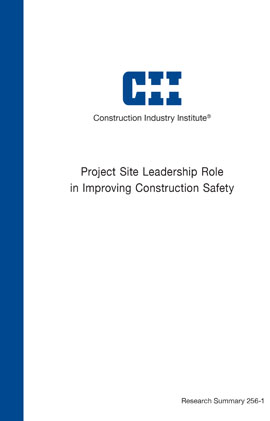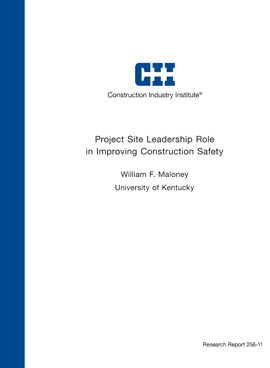
Project Site Leadership Role in Improving Construction Safety
Between the 1950s and the 1990s, the focus of industrial safety on identifying, eliminating, and/or mitigating hazards shifted to a focus on organizational issues such as training and education, selection of workers and contractors, and the development of safety systems. (Previous CII safety research has focused on processes and techniques for improved safety performance.) Since the 1990s, the focus has shifted again to the role social-psychological issues play in safety; this shift occurred when it became clear that disasters like Chernobyl were in large part attributable to poor organizational safety culture. In fact, a current focus in the nuclear industry is on the human factors that affect safety, including influences on worker behavior (Muschara, 2007). In 2008, the National Occupational Research Agenda identified the investigation of safety culture as one of 15 strategic goals on the National Construction Agenda.
Because the members of CII Research Team (RT) 256 began this study with the understanding that leadership is a key element in developing an organization’s safety culture, the team attempted to answer the following research question: What is the relationship between the leadership behaviors of site leadership personnel and project safety performance? With this question in mind, the team designed a research methodology to investigate the values, priorities, and behaviors of construction personnel in various leadership positions. The team was unable to answer the research question because the CII member company projects participating in the study all had superior safety performance. However, the large amount of data collected generated other findings of value.
Thirty-one projects with 456 individuals in leadership positions participated in the study, and a total of 3,243 evaluations of leader behavior were obtained. The measure of safety performance used was the Recordable Incidence Rate (RIR), a project-level measure. The average RIR for the 31 projects was 2.04, and six of the projects had an RIR of 0.0. As a result, it was not possible to identify a statistically significant relationship between leader behaviors and the RIR.
The team expanded the scope of the research to address variables and relationships. Key findings include the following:
- Craft workers and employees under the age of 30 believe less strongly than supervisors and workers over 30 that injuries are preventable, that an injury-free workplace is both important and attainable, and that safety is management’s responsibility.
- Leaders, through their actions, need to communicate that safety is important. On a day-to-day basis, failure to correct unsafe acts and to talk about more than production issues sends the message that safety is not important.
- Leaders must develop a vision of a desired safety culture and increase behaviors that inspire this vision in the workforce. They must also pursue continuous improvement in safety by challenging the workers to improve the work process and by recognizing and rewarding people for improved safety.
- There are significant links between leader behaviors and project safety climate.
- Lagging indicators such as the RIR are of limited value in determining the impact of leader behavior. Because of these limitations, the research question could not be answered directly.
- Leaders must adopt a direct, active leadership style that focuses on creating the desired safety values, climate, and culture. Leader behavior must reinforce the values, beliefs, and assumptions that constitute the desired safety culture in the project workforce and that affect worker behaviors.


